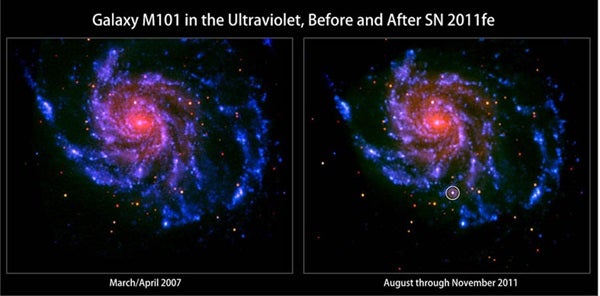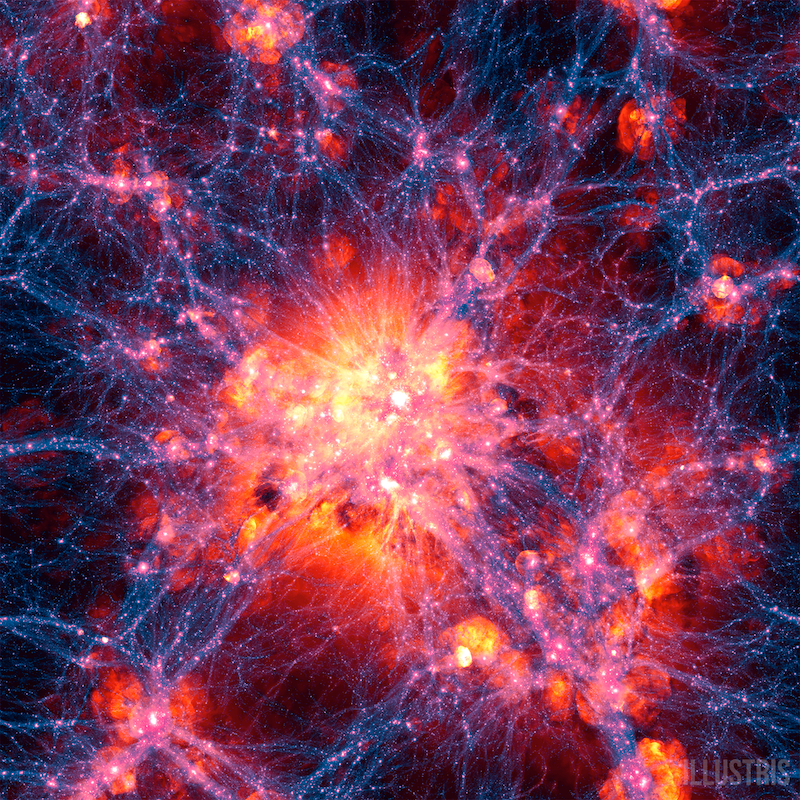All evidence points to a white dwarf that feeds off its companion’s star, gaining mass, growing unstable, and ultimately detonating. But does that white dwarf draw material from a Sun-like star, an evolved red giant star, or from a second white dwarf? Or is something more exotic going on? Scientists can collect clues by searching for “cosmic crumbs” left over from the white dwarf’s last meal.
In two comprehensive studies of SN 2011fe — the closest type Ia supernova in the past two decades — there is new evidence that indicates that the white dwarf progenitor was a particularly picky eater, leading scientists to conclude that the companion star was not likely a Sun-like star or an evolved giant.
“It’s hard to understand how a white dwarf could eat itself to death while showing such good table manners,” said Alicia Soderberg from the Harvard-Smithsonian Center for Astrophysics (CfA) in Cambridge, Massachusetts.
Soderberg and her colleagues examined SN 2011fe with a suite of instruments in wavelengths ranging from X-rays to radio. They saw no sign of stellar material recently devoured by the white dwarf. Instead, the explosion occurred in a remarkably clean environment.
“This white dwarf was a tidy eater,” said Laura Chomiuk, also from the CfA.
Additional studies using NASA’s Swift satellite, which examined a large number of more distant type Ia supernovae, appear to rule out giant stars as companions for the white-dwarf progenitors.
Taken together, these studies suggest that type Ia supernovae likely originate from a more exotic scenario, possibly the explosive merger of two white dwarfs.
“This is an exciting time in type Ia supernova research since it brings us closer to solving one of the longest-standing mysteries in the life cycles of stars,” said Raffaella Margutti from the CfA.










